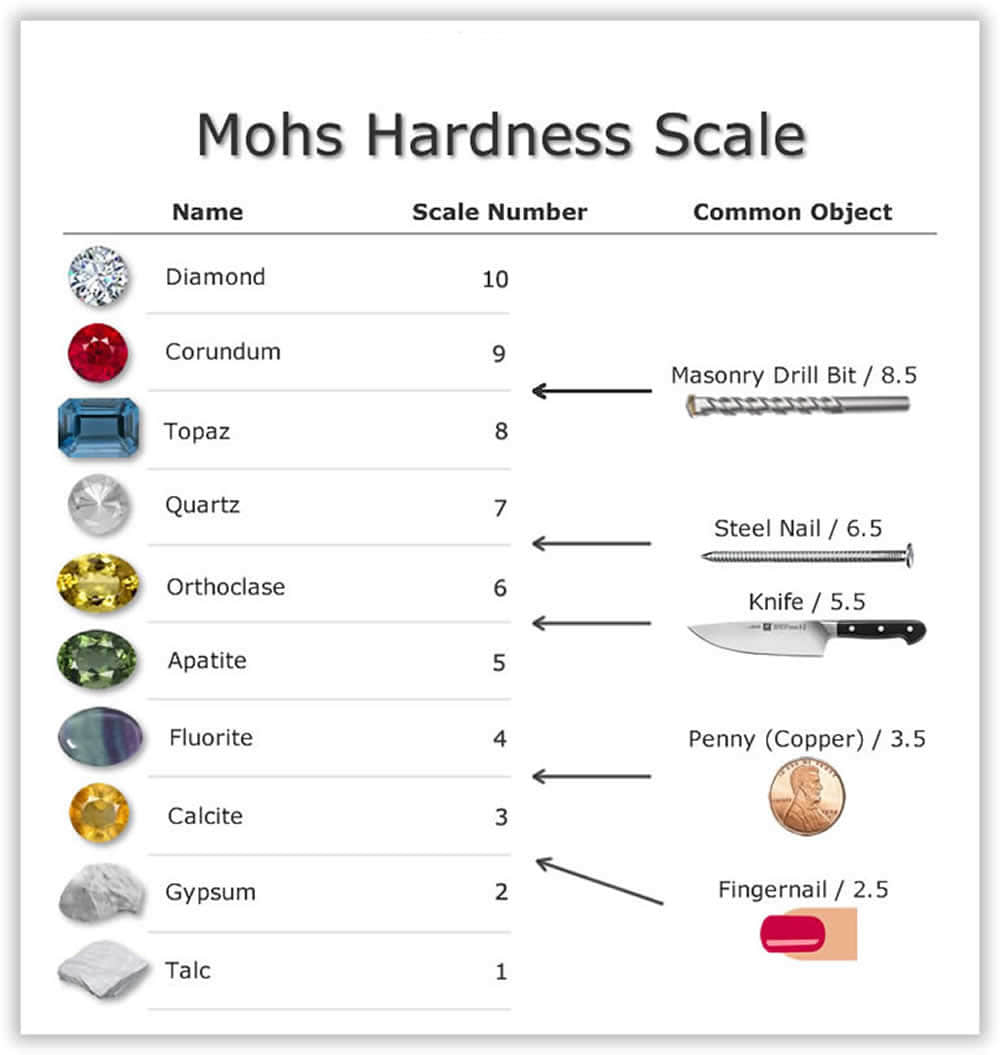Gemstone Hardness | Mohs Scale with Images and Charts
seastar
2025-07-08 07:17:02

Gemstone hardness… who cares? You should. If you are wearing gems, looking to buy them, or designing gemstone jewelry, hardness is something that should concern you. Why? The usual bottom line: money. Your gemstones add charm and allure to your person, but they're also investments that need protection from harm - scratching, in particular.
A low Mohs hardness value (lower than 7) increases the risk of damage which results in a loss of value and necessitates expensive repairs.
More than that, though, as a lover of gemstones, you want to safeguard their elegance and keep them looking brilliant. You can easily do this by becoming aware of your gemstones' place on the Mohs hardness scale (explained later) and taking the appropriate care when creating settings for your gemstones and while wearing them, whether for everyday use, or for special occasions.
Hardness is part of the holy trinity used by dealers to rate the durability of a stone; the other two qualities being toughness and stability.
Gemstone hardness, what exactly is it?
We usually think in general terms of something being hard (or the opposite - soft) as a measure of how it feels to us. And we consider whether or not we could scratch it, bend it, break it, or what would happen if we dropped it on the ground or whacked it with a hammer. All of these actions are important when dealing with gemstones, but gemstone hardness has a very specific definition:
Gemstone Hardness is a measure of how difficult (or easy) it is to scratch the surface of the gemstone.
The hardest gemstones (diamonds, rubies and sapphires) get a rating closer to 10 on the Mohs scale, while the softer gemstones (amber, chrysocolla and pearl) are placed closer to 1 (see the entire Mohs index above).
How is gemstone hardness tested?
The really interesting thing about making this distinction is that there is no one judge of hardness; determining gemstone hardness is a process that involves using materials with known Mohs hardness scale values and scratching the surface of a rough gemstone. This scratch test is referred to as destructive, for the obvious reason that it inflicts damage upon a gemstone and there are more sophisticated ways of identifying a gemstone by measuring its other qualities (refractive index, specific gravity, etc.).
Moreover, Friedrich Mohs went through this whole procedure of using different gemstones to scratch each other until he could confidently develop the index that we rely upon today. Friedrich Mohs simply gathered 10 gemstones that represent the most common gemstone families (talc, gypsum, calcite, fluorite, apatite, orthoclase, quartz, topaz, corundum, and diamond) and set about scratching them against each other, until he was able to develop a hierarchy of scratchability - the Mohs hardness scale.
10 gemstones of common gemstone families
Talc
Gypsum
Calcite
Fluorite
Apatite
Orthoclase
Quartz
Topaz
Corundum
Diamond
It's a sort of last-man-standing knockout scratch contest. The undisputed heavyweight champion of this game is diamond, who sits at 10; while talc sits at 1, nursing a glass jaw - actually it should be a talc jaw because glass, also known as silicon dioxide, or quartz, is considerably harder than talc and sits at number 7 on the Mohs scale. We'll come back to quartz in a minute because it is a major player in why you should be concerned with gemstone hardness and what to do about it.
How does gemstone hardness apply to everyday life?
Firstly, if you are inclined to wear gemstone jewelry every day, then you must consider the way in which your gemstones may interact with the environment, not only as you wear them, but as you store them, as well. A good example of how gemstone hardness applies to everyday life, even for those who may not often wear gemstone jewelry, is a watch crystal.
I have two watches in my collection: a Swatch that I've had for two years and 75-year-old Omega Speedmaster, given to me by my grandfather. The former has an acrylic glass crystal and the latter a sapphire crystal. Though I rarely wear the Swatch, it is covered in scratches, whereas the Omega, which went through the trenches of World War II, is as clear as…well, it's crystal clear - not a scratch on it!
This is evidence of the hardness of sapphire and a testament to its place at number 9 on the Mohs hardness scale. More germane to this discussion of gemstone hardness though, is the reason why sapphire and ruby (of the same family, Corundum) are so highly recommended for everyday wear jewelry, such as rings and bracelets - they are tough as nails! In fact, much harder than nails, which typically have a Mohs hardness of about 6.5 (see our cross-referenced hardness charts for gemstones and other common materials above).